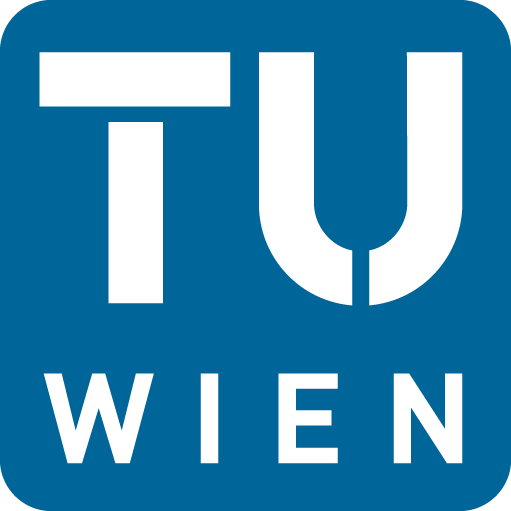DC Field
Value
Language
dc.contributor.author
Niggas, Anna
-
dc.contributor.author
Probst, D.
-
dc.contributor.author
Ravindran, N.
-
dc.contributor.author
Kofler, C.
-
dc.contributor.author
Speckmann, C.
-
dc.contributor.author
Vukovic, Filip
-
dc.contributor.author
Grossek, Alexander Sagar
-
dc.contributor.author
Lemell, Christoph
-
dc.contributor.author
Aumayr, Friedrich
-
dc.contributor.author
Susi, T.
-
dc.contributor.author
Kotakoski, J.
-
dc.contributor.author
Wilhelm, Richard Arthur
-
dc.date.accessioned
2025-06-10T06:31:18Z
-
dc.date.available
2025-06-10T06:31:18Z
-
dc.date.issued
2025-05-13
-
dc.identifier.citation
<div class="csl-bib-body">
<div class="csl-entry">Niggas, A., Probst, D., Ravindran, N., Kofler, C., Speckmann, C., Vukovic, F., Grossek, A. S., Lemell, C., Aumayr, F., Susi, T., Kotakoski, J., & Wilhelm, R. A. (2025). Nanostructuring Of 2D Materials Using Slow Highly Charged Ions. In <i>Defect-Mediated Engineering of Nanomaterials for Energy and Quantum Applications : Beilstein Nanotechnology Symposium 2025 : Book of Abstracts</i> (pp. 66–67). http://hdl.handle.net/20.500.12708/216004</div>
</div>
-
dc.identifier.uri
http://hdl.handle.net/20.500.12708/216004
-
dc.description
Poster
https://www.beilstein-institut.de/en/symposia/defect-mediated-engineering-of-nanomaterials/
-
dc.description.abstract
The ability to precisely tailor 2D materials and heterostructures thereof is crucial for their integration into next-generation nanodevices. In this work, we focus on highly charged ion (HCI)-induced nanostructuring, a technique capable of perforating 2D materials with monolayer precision [1]. HCIs store large amounts potential energy, which equals the sum of binding energies of all removed electrons, e.g. about 40 keV in the case of a 40-times charged Xe ion. Upon approaching a sample surface, this potential energy is released within the very first layers of the material, where the depth of energy deposition can be tuned via the incident ion charge state and kinetic energy [2]. In 2D materials and heterostructures, this can be employed to tune pores of a certain size.
R. Kozubek et al. [3], for instance, demonstrated charge-state-dependent nanopore formation in free-standing monolayers of MoS2, with increasing ion charge states resulting in larger pore diameters on the order of 1–5 nm. In contrast, E. Gruber et al. [4] conducted similar experiments with graphene monolayers and observed no pore formation. These differing results highlight the importance of electronic properties of the irradiated materials: MoS2, a semiconductor, dissipates electronic excitation differently than graphene, a semi-metal. Together, this can be applied to precisely tune hetero- structures of both materials shown recently by J. Schwestka et al. [1]. Depending on the orientation of the heterostructure (i.e. which material faces the ion beam first), MoS2 was found to be perforated (with graphene
Poster
#8
May 13-15, 2025, Rüdesheim, Germany 66
Defect-mediated engineering of nanomaterials for energy and quantum applications Beilstein Nanotechnology Symposium 2025
behind still intact, cf. Figure 1 (see printed version)) or shielded from being damaged (by a graphene layer in front).
Besides the empirical finding of different susceptibility of conducting and insulating surfaces to desorption by strong electronic excitations by HCI, the coupling between a highly excited electronic system on the nanoscale to lattice atomic motion remains still elusive. A. Grossek et al. [5] proposed a hopping model, leading to a phase diagram of the susceptibility of a material to HCI-induced nanostructuring depending on electronic material properties and ion charge state. However, so far these results could only be benchmarked with previous results in literature for semi-metal graphene [4] and semi-conducting MoS2 [3], respectively, and more experiments across a wider range of 2D materials with different properties will be necessary to refine predictive models and optimise nanostructuring techniques. Here, we present new data on pores induced in free-standing monolayers of insulating hexagonal boron nitride (hBN). Our results align with existing models [5], and provide new insights into how material properties influence nanostructuring.
However, even though our models yield good qualitative agreements with experiments, no quantitative or predictive modelling could yet be achieved for nanostructure formation by HCIs. Producing more experimental data for benchmarking theoretical predictions, hence, is critical for the future integration of HCI-based nanostructuring into scalable material processing methods, where they could be benefiting applications in nanoelectronics and filtration.
en
dc.language.iso
en
-
dc.subject
Ionen
de
dc.subject
Oberflächen
de
dc.subject
Ionen-Oberflächen-Wechselwirkung
de
dc.title
Nanostructuring Of 2D Materials Using Slow Highly Charged Ions
en
dc.type
Inproceedings
en
dc.type
Konferenzbeitrag
de
dc.contributor.affiliation
University of Vienna, Austria
-
dc.contributor.affiliation
University of Vienna, Austria
-
dc.contributor.affiliation
University of Vienna, Austria
-
dc.contributor.affiliation
University of Vienna, Austria
-
dc.contributor.affiliation
University of Vienna, Austria
-
dc.description.startpage
66
-
dc.description.endpage
67
-
dc.type.category
Abstract Book Contribution
-
tuw.booktitle
Defect-Mediated Engineering of Nanomaterials for Energy and Quantum Applications : Beilstein Nanotechnology Symposium 2025 : Book of Abstracts
-
tuw.researchTopic.id
M1
-
tuw.researchTopic.name
Surfaces and Interfaces
-
tuw.researchTopic.value
100
-
tuw.publication.orgunit
E134-03 - Forschungsbereich Atomic and Plasma Physics
-
tuw.publication.orgunit
E136 - Institut für Theoretische Physik
-
dc.description.numberOfPages
2
-
tuw.author.orcid
0000-0002-5838-5789
-
tuw.author.orcid
0000-0003-3463-651X
-
tuw.author.orcid
0000-0003-2560-4495
-
tuw.author.orcid
0000-0002-9788-0934
-
tuw.author.orcid
0000-0001-9451-5440
-
tuw.event.name
Defect-Mediated Engineering of Nanomaterials for Energy and Quantum Applications, Beilstein Nanotechnology Symposium 2025
en
tuw.event.startdate
13-05-2025
-
tuw.event.enddate
15-05-2025
-
tuw.event.online
On Site
-
tuw.event.type
Event for scientific audience
-
tuw.event.place
Rüdesheim
-
tuw.event.country
DE
-
tuw.event.presenter
Niggas, Anna
-
wb.sciencebranch
Physik, Astronomie
-
wb.sciencebranch.oefos
1030
-
wb.sciencebranch.value
100
-
item.openairetype
conference paper
-
item.cerifentitytype
Publications
-
item.grantfulltext
restricted
-
item.languageiso639-1
en
-
item.openairecristype
http://purl.org/coar/resource_type/c_5794
-
item.fulltext
no Fulltext
-
crisitem.author.dept
E134-03 - Forschungsbereich Atomic and Plasma Physics
-
crisitem.author.dept
University of Vienna
-
crisitem.author.dept
University of Vienna
-
crisitem.author.dept
University of Vienna
-
crisitem.author.dept
University of Vienna
-
crisitem.author.dept
E134-03 - Forschungsbereich Atomic and Plasma Physics
-
crisitem.author.dept
TU Wien
-
crisitem.author.dept
E136 - Institut für Theoretische Physik
-
crisitem.author.dept
E134-03 - Forschungsbereich Atomic and Plasma Physics
-
crisitem.author.dept
University of Vienna
-
crisitem.author.dept
E134-03 - Forschungsbereich Atomic and Plasma Physics
-
crisitem.author.orcid
0000-0002-5838-5789
-
crisitem.author.orcid
0000-0003-3463-651X
-
crisitem.author.orcid
0000-0003-2560-4495
-
crisitem.author.orcid
0000-0002-9788-0934
-
crisitem.author.orcid
0000-0001-9451-5440
-
crisitem.author.parentorg
E134 - Institut für Angewandte Physik
-
crisitem.author.parentorg
E134 - Institut für Angewandte Physik
-
crisitem.author.parentorg
E130 - Fakultät für Physik
-
crisitem.author.parentorg
E134 - Institut für Angewandte Physik
-
crisitem.author.parentorg
E134 - Institut für Angewandte Physik
-
Appears in Collections:

